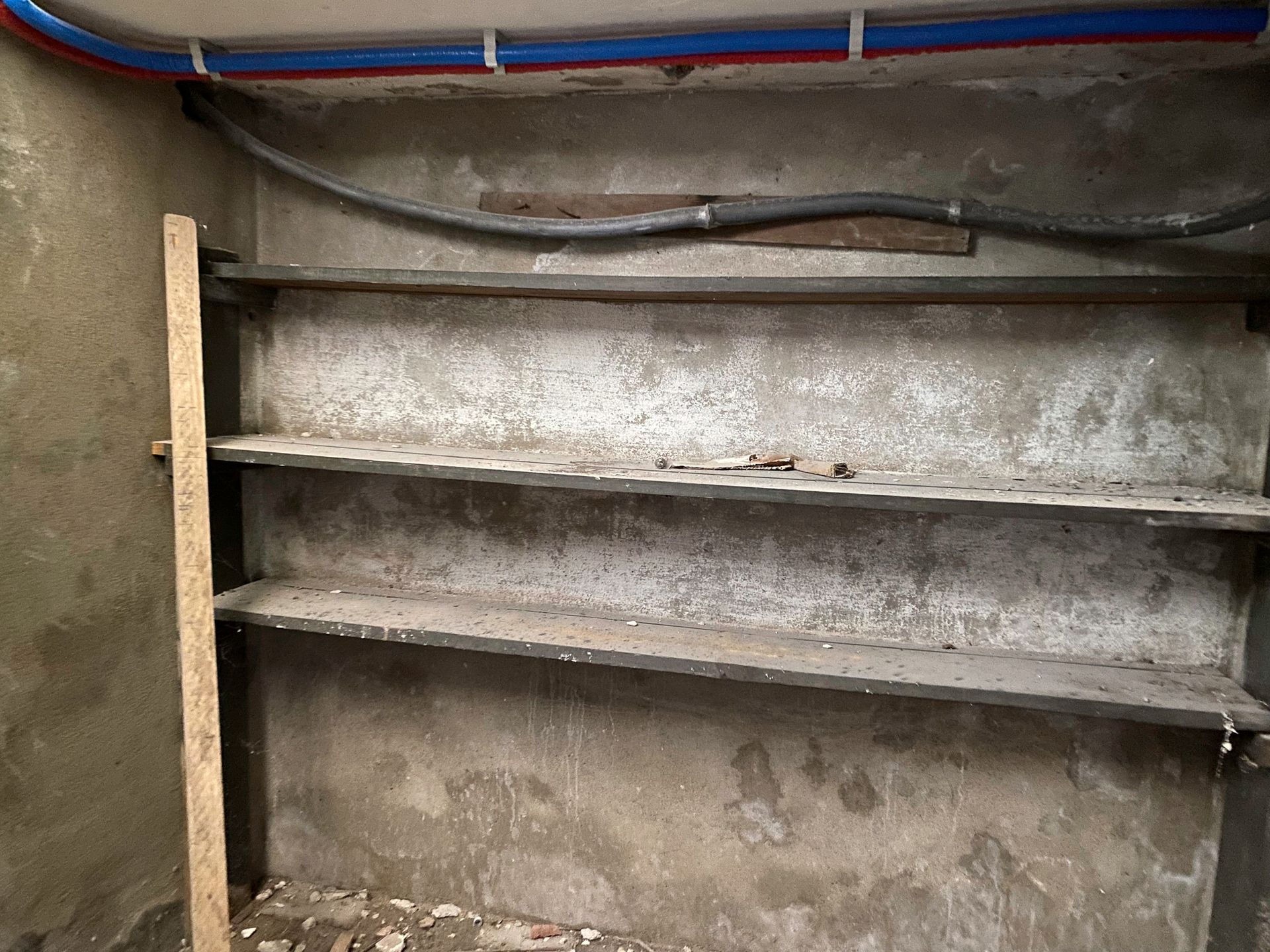Ultimate Guide to Waterproofing in Basement: Techniques & Tips for a Dry Space
Are you facing moisture issues in your basement? This no-nonsense guide demystifies waterproofing in basements, offering you clear, practical strategies to effectively combat water intrusion. Discover how to diagnose your basement’s moisture problems and explore a range of solutions, from quick DIY seals to complete professional systems for waterproofing in basement, designed to keep your basement dry year-round.
Key Takeaways
- Basement moisture is common due to subterranean location and can stem from hydrostatic pressure, poorly draining soil, and condensation; it’s detectable through signs like dampness and efflorescence, necessitating proper waterproofing measures.
- Preparation for basement waterproofing involves cleaning walls, removing efflorescence, and repairing cracks to ensure the best foundation for waterproofing materials; professional services can address both interior and exterior moisture sources effectively.
- Regular basement maintenance, including checking for moisture entry points and keeping the drainage system clear, along with professional foundation repair and stabilization, are crucial to maintaining a dry and structurally sound basement.
Understanding Basement Moisture and the Need for Waterproofing
Understanding the reasons basements are prone to dampness and the importance of making them watertight is crucial before diving into sophisticated waterproofing methods. Being partly or entirely subterranean, basements inherently face moisture-related issues. Moisture in these areas can stem from several sources, such as hydrostatic pressure pushing against basement walls, inadequate drainage systems, elevated water tables, precipitation seepage, surrounding groundwater levels and air humidity condensing on cooler surfaces.
For instance, when exterior basement walls encounter hydrostatic pressure from outside water sources like a high water table or poorly draining soil around your foundation—water tends to find its way through any small opening it can locate. This is especially true for concrete walls, which can be susceptible to water infiltration if not properly sealed. To detect signs of moist conditions early on and address them accordingly, a basic method like attaching a piece of aluminum foil to the wall may be employed—highlighting just how imperative it is for homeowners to protect their property by securing their foundations against liquid infiltration that could lead not only to structural damage but also compromise indoor air quality. Ensuring waterproof basement walls is essential to prevent water infiltration and avoid potential problems such as structural damage, mold, unpleasant odors, and cracks.
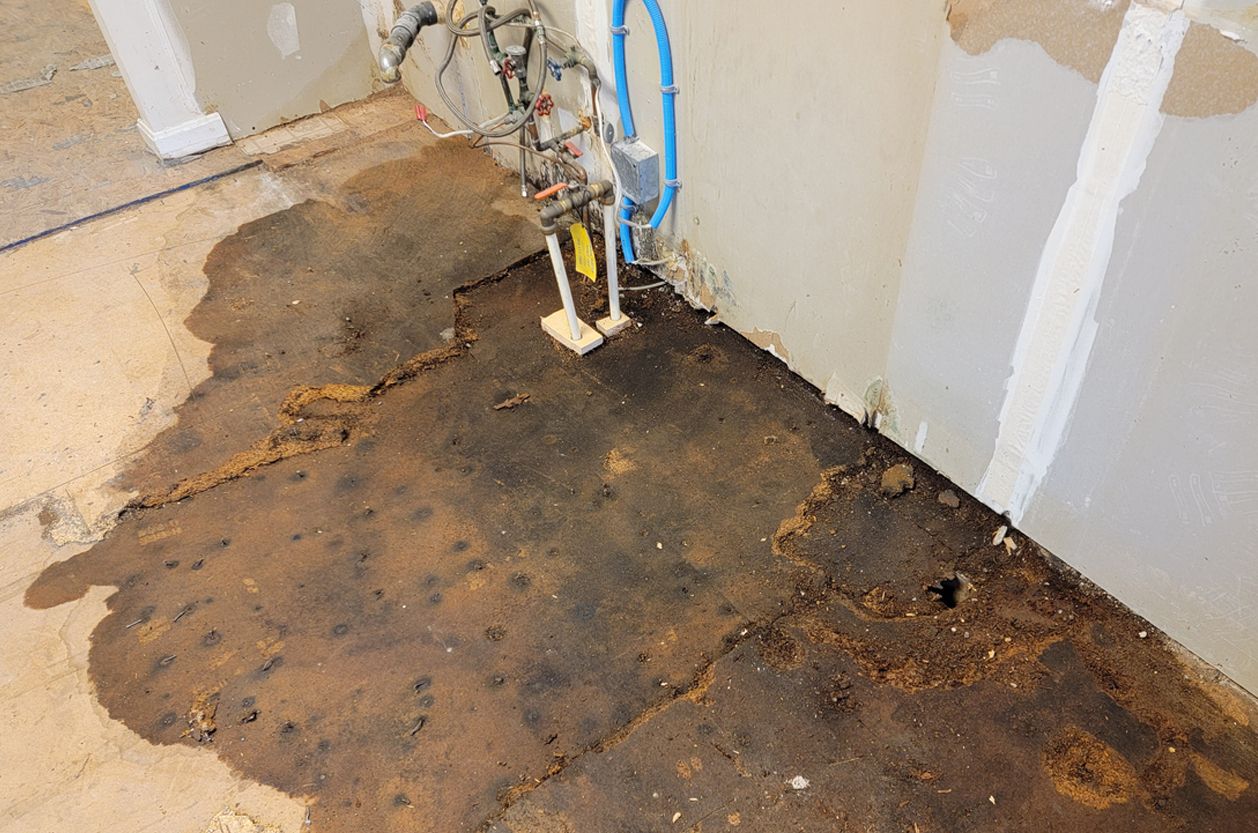
Detecting Telltale Signs of Moisture
The initial step towards tackling moisture issues in your basement involves recognizing the early indications of dampness. Signs that a property might be facing such problems include:
- Air that feels moist and humid.
- Beads of water, or condensation, forming on cool basement walls and floors.
- A musty smell indicative of mold or mildew presence.
- Efflorescence appearing as white, powdery deposits on the surfaces of basement walls due to mineral residue left behind by evaporating water.
To assess if there is any water penetration in your walls, you can conduct a simple test.
- Affix a square foot piece of aluminum foil tightly against the wall for roughly 24 hours.
- When time has elapsed, peel off the foil to inspect for wetness beneath it.
- In case there’s moisture present under this makeshift barrier, this suggests exterior infiltration needing appropriate waterproofing interventions.
By promptly identifying these warning signals, one can take preventive measures to ensure their basement remains dry thus avoiding escalating concerns related to structural integrity compromise through persistent water damage and unhealthy mold proliferation.
The Science Behind Seeping Walls
Grasping the ways in which water breaches your basement is critical for selecting appropriate waterproofing measures. The vulnerability of basements to water seepage arises from multiple potential sources, including:
- openings around doors, windows, and vents
- hydrostatic pressure
- penetrations within walls
- ineffective grading of the surrounding property
- cracks in concrete or gaps in mortar joints
- incidents of flooding
- elevated groundwater levels
Confronting these common infiltration paths is essential to avert moisture-related damage. Through capillary action—akin to how liquid moves along a wick—moisture can travel both vertically and horizontally across porous materials found within basement constructions.
The integrity of any foundation can be compromised by structural fissures that facilitate water ingress into the home’s lower reaches. Therefore, it is crucial to fill cracks to prevent further dampness problems throughout. Houses experience what’s known as the stack effect: this induces negative air pressures at lower levels like basements while pulling moist outside air inward via any voids or crevices present—an occurrence that underscores why bolstering basement wall defenses against moisture is so pertinent for sustaining a dry interior space. Waterproofing basement walls is essential to prevent leaks, structural problems, and health hazards.
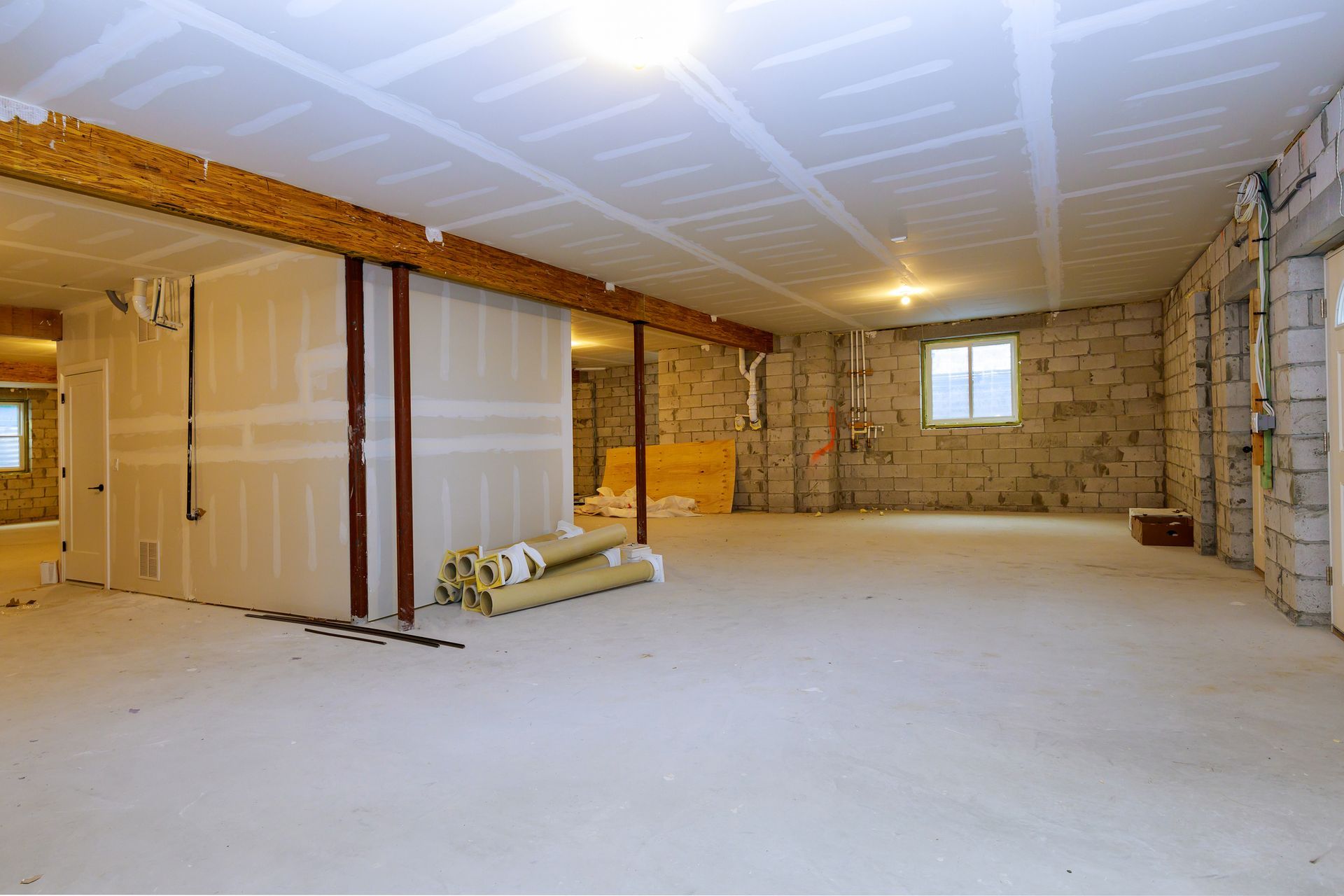
Preparing Your Basement for Waterproofing
Before initiating the process of effectively waterproofing your basement walls, it’s essential to undertake thorough preparation. Follow these preliminary steps:
- Strip away any existing coatings or paint from the concrete walls in order to establish a clean base for the new waterproof layer.
- Use a wire brush or paint scraper to remove efflorescence—the white, powdery deposits of salts—from the wall surfaces.
- If you encounter persistent efflorescence that cannot be removed with manual methods, consider using muriatic acid while ensuring you wear proper respiratory protection due to its chemical nature.
It is also important to seal and protect the concrete floor to prevent moisture intrusion.
It is critical to eliminate all standing water within your basement as a safety measure against electrical hazards and also as part of preparing the surface for effective moisture sealing. Cleanse and thoroughly dry out your walls. Adequate airflow and dehumidification are key here since waterproof materials adhere best when applied onto an entirely dried-out surface.
Small cracks and openings no wider than 1/4 inch should be filled using silicone caulk which helps achieve an even plane crucial for uniform application of subsequent sealants or paints designed specifically for this purpose—ensuring true watertightness once work begins on tailoring viable solutions suited specifically toward safeguarding your subterranean space against unwanted ingress of dampness through its structural barriers.
Clearing the Stage: Removing Loose Debris and Standing Water
It’s essential to clear away any loose debris from the basement to ensure a pristine surface which will enhance the bonding of waterproofing materials. Begin by removing standing water within the basement so it doesn’t impede both the process and the effectiveness of waterproofing. This step is crucial as a clean and moisture-free area enhances adhesive qualities, leading to more robust results in creating a waterproof seal.
Before commencing with waterproofing efforts, relocate all furnishings and belongings from proximity to the walls for unhindered access. Cleansing and drying out your basement walls become considerably easier when obstacles are removed, laying down an optimal foundation for applying waterfront products efficiently. Clear surroundings are key not just for ease, but also play into achieving superior protection against water infiltration through maintaining unblocked areas during treatment applications on your foundation surfaces.
Inspection Time: Identifying Cracks and Weak Spots
Examining your basement for any weaknesses, such as cracks or deteriorating areas, is a vital step in ensuring proper waterproofing. Search for signs of water penetration like standing water or damp patches at the base of walls—these are clear indicators that there may be moisture problems which need to be rectified before proceeding with waterproofing measures. It’s important to locate and make note of all visible fissures or openings. These must be mended using suitable materials to fill cracks, such as hydraulic cement, so that effective waterproofing can take place.
As you continue with the process of making your basement watertight, focus on sealing points around windows, doors, and window wells utilizing either silicone caulk or expanding foam to thwart the entry of water. Routinely inspect these areas for new breaches or pre-existing gaps and maintain dependable seals on all basement entries including windows and doors to ensure ongoing protection from moisture ingress. Diligent inspection and repair work lay a strong groundwork for successful foundation waterproofing initiatives.
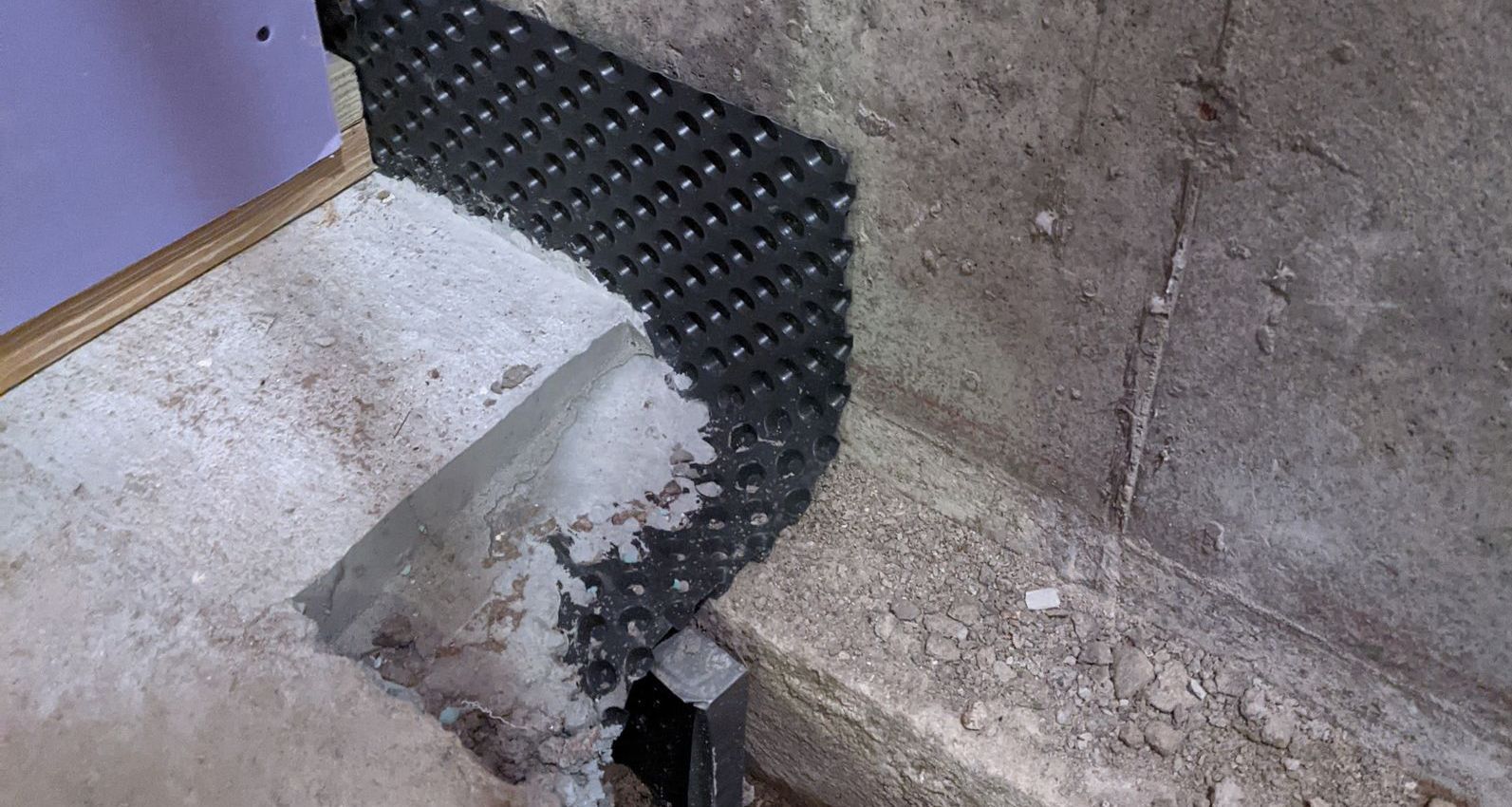
The Basement Ace's Approach to Basement Waterproofing
At The Basement Ace, we specialize in ensuring that basements remain dry and homes stay safe. Our holistic basement waterproofing methods address both the interior and exterior contributors to moisture challenges, offering a comprehensive remedy for dampness issues. We recognize that internal sources such as condensation, along with external factors like groundwater intrusion, are potential causes of moisture.
Our integrated waterproofing tactics combat water from every conceivable direction, securing your basement against all forms of water ingress. We boast proficiency in a variety of services including:
- Stabilizing foundations
- Repairs to foundation integrity
- Complete waterproofing measures
- Installation and maintenance of sump pump systems
- Solutions tailored for crawl spaces
- Enhancement of indoor air quality
- Eradication and prevention of mold
Let’s explore the specific strategies we implement to maintain a perpetually dry basement environment.
Interior Waterproofing: Our In-House Specialty
The process of interior basement waterproofing utilizes a variety of specialized methods and products designed to combat the challenges posed by an indoor setting, including making sure your basement walls are impenetrable to water. Hydraulic cement is particularly useful for plugging gaps and sealing any existing fissures in the walls, effectively blocking pathways that might allow water entry. Sealers containing silicate can also be used on these surfaces. They penetrate deeply and set off a chemical reaction that solidifies the wall’s structure into a watertight barrier.
To waterproof interior basement walls, some products are recommended for protecting commercial concrete basement walls from water and contaminant infiltration.
To these treatments, one may apply acrylic-based waterproofing paint as another protective measure against moisture intrusion – this type of paint adheres well even over previously painted surfaces. Products meant for interior waterproofing tend to be user-friendly enough for homeowners themselves to handle application successfully without professional assistance. Such strategies are essential in maintaining a dry and secure space within your home’s lower levels from all angles inside out.

Exterior Waterproofing: Fortifying Your Foundation Walls
Applying a waterproof coating to your foundation walls is crucial for safeguarding your house from water ingress, particularly for the exterior walls. This process involves these key steps:
- Digging around the home down to the base of the foundation walls.
- Affixing a protective waterproof layer or barrier.
- Setting up drainage tiles or channels.
- Applying a drain board or insulative material to shield the wall’s waterproof system during soil replacement.
Considering that this operation requires intricate excavation and precise installation of membranes and adequate drainage systems, it’s advisable to engage experienced professionals in exterior waterproofing endeavors. Such an investment ensures that your basement remains dry by providing an effective defense against external moisture penetrating through your foundations’ walls into your home interior.
Innovative Solutions for Persistent Dampness
Dealing with persistent moisture in your basement can be a vexing problem. Modern strategies offer effective management of this concern. The most reliable long-term approach to mitigating excessive humidity within the basement is to waterproof its walls. An efficient strategy for achieving moisture-free basement walls involves installing a drainage system beneath the floor of the basement.
These advanced solutions surpass conventional methods of waterproofing by targeting and resolving fundamental sources of dampness. With these progressive interventions put into place, you’ll have the means to conquer even relentless issues with moisture and ensure that your basement remains pleasantly dry.
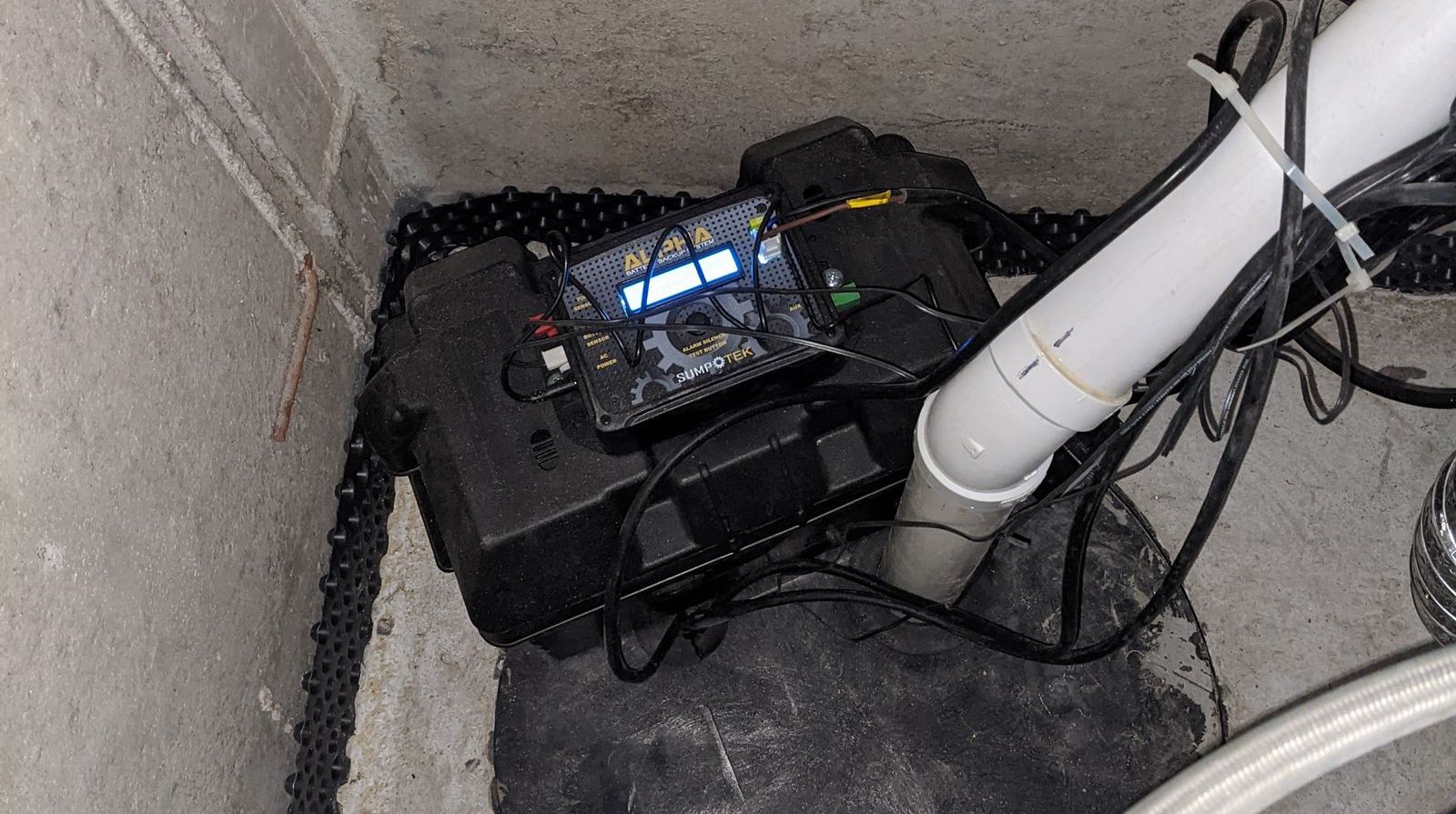
Sump Pump Systems: Your Basement's Trusty Sentinel
The sump pump is essential for maintaining a dry basement, as it regulates the water levels within. Depending on the degree of water-related concerns and the configuration of your basement, you can choose between pedestal pumps or submersible pumps to address these needs effectively.
Annual maintenance of your sump pump is crucial in thwarting floods in your basement. This ensures that it functions properly and responds accurately to specific water levels. A dependable sump pump system represents a sound investment towards controlling basement moisture and safeguarding against any potential water damage.
Custom Drainage Solutions: Tailored to Your Terrain
To mitigate basement moisture and safeguard the integrity of your home, it’s critical to implement strategic drainage measures tailored to the specific needs of your property. This involves several key actions.
- Ensuring efficient management of rainwater and surface water.
- Employing gutters and downspouts effectively to steer water clear from your residence.
- Making custom alterations to landscaping, such as regrading soil so that it slopes away from the foundation walls and positioning moisture-loving plants like flower beds at an appropriate remove.
The incorporation of a drain tile system is particularly effective in enhancing these strategies by providing additional reinforcement against water pooling around the foundation.
Securing your foundation against potential damage like cracking or sustained flooding relies on rigorous drainage maintenance, managing levels of soil dampness, and avoiding planting large trees too near to building structures. By tailoring these approaches carefully, you can maintain a perpetually dry basement floor no matter how challenging or unique your site’s environmental conditions may be.
Repairing and Stabilizing: Beyond Waterproofing
The repair and stabilization of your foundation are just as critical for the overall well-being of your house as waterproofing. Undertaking these vital measures guarantees the safety and durability of a home, warding off additional damage that could undermine its structural soundness. Two principal techniques used in stabilizing foundations include steel piers and concrete press piers.
Steel piers offer formidable support by being driven deep into the ground underpinning the foundation, whereas concrete press piers come at a reduced expense but may require later adjustments due to their tendency to shift or tilt over time since they aren’t anchored directly to the foundation. In contrast, poured concrete requires significant labor efforts because it involves drilling holes beneath an existing foundation followed by pouring and allowing ample curing time. Thus it’s considered less efficient due to its invasive nature and protracted installation duration.
Ensuring both effective waterproofing along with diligent attention towards foundational stability is key in maintaining your home’s long-term integrity and safety.
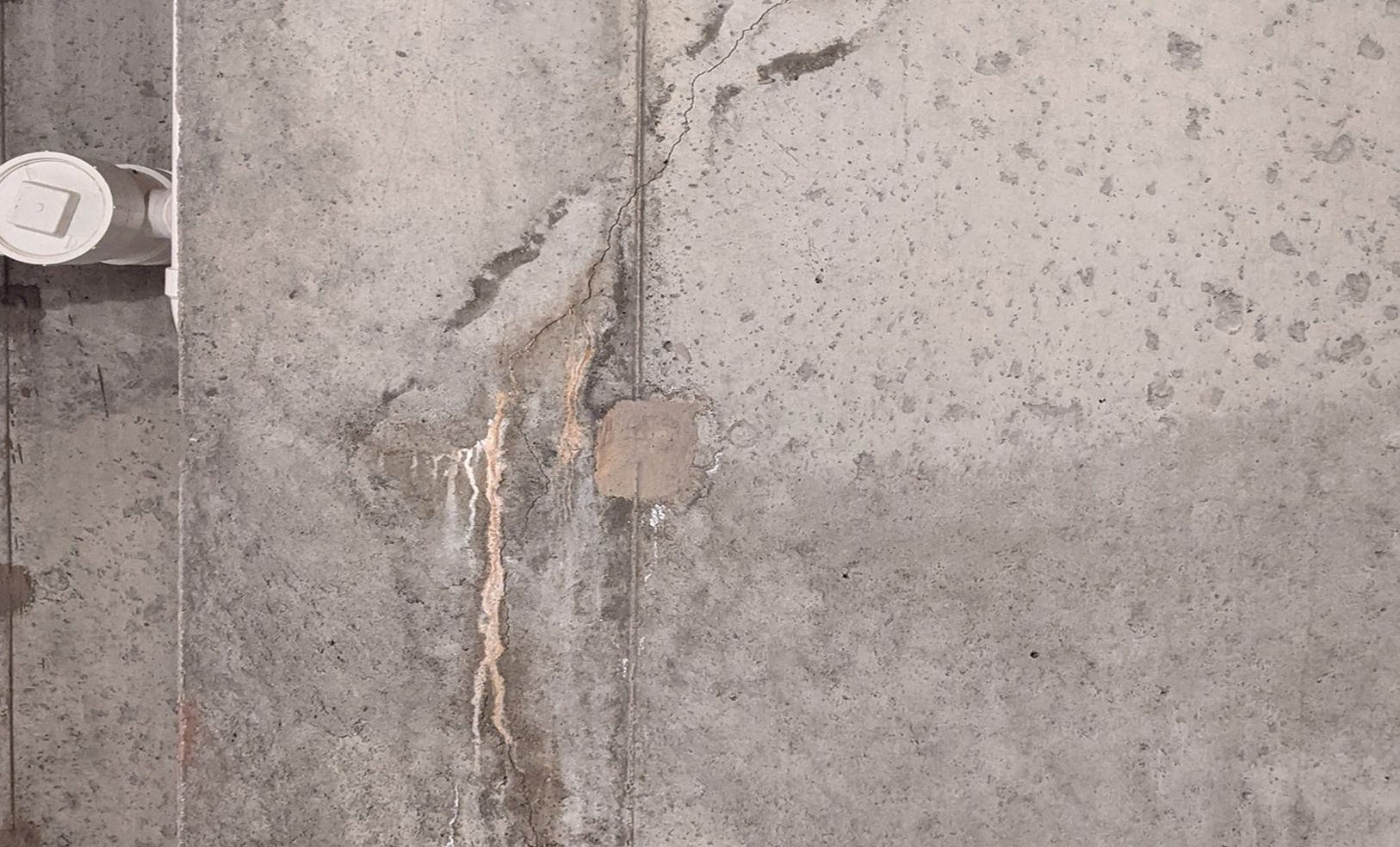
When Cracks Tell a Story: Addressing Foundation Concerns
Cracks in your home’s foundation can provide valuable insights into the condition of your property. It is crucial to distinguish between non-structural and structural cracks within the foundation, as this differentiation influences how repairs should be addressed. The appearance of these foundational cracks—whether vertical, horizontal or taking on a stair-step pattern—is often indicative of underlying structural issues that may require varied methods for rectification.
When it comes to minor foundational cracking, homeowners can undertake repairs themselves using injections of epoxy or polyurethane foam designed to fill such cracks, depending on their specific nature. Conducting routine examinations of the foundation helps prevent small imperfections from escalating into larger and more expensive problems that might threaten the building’s structural stability. Timely intervention with foundational issues is imperative in preserving your house’s overall structural health.
Maintenance Tips: Keeping Your Basement Dry Year-Round
To ensure the dryness of a basement, it’s essential to perform frequent cleaning and adopt preventative strategies. Make sure to consistently clear out drains, window wells, downspouts, and gutters in order to avert potential flooding scenarios. Adding leaf guards to gutters will also aid in diverting water away from your home’s foundation effectively.
By implementing robust waterproofing measures, you can significantly reduce the maintenance and cleansing demands for your basement space. Diligent attention to these duties helps ward off problems associated with moisture, maintaining a dry basement all year round.
Regular Check-Ups: The Key to Lasting Protection
It’s important to conduct regular inspections as a means of maintaining long-term defense against the infiltration of moisture into your basement. Ensuring that all household members are knowledgeable about the main water valve’s location and how to operate it is key in halting potential floods when urgent situations arise. It is critical to frequently check gutter systems to confirm they are efficiently channeling water away from your home’s foundation.
To avoid having water circle back toward your house, verify that the sump pump’s outflow pipe is properly oriented to expel water at a distance from the foundation. Engaging in these ongoing maintenance routines will bolster your waterproofing measures and help you maintain a dry basement throughout all seasons.
Cost Considerations and Value of Waterproofing
In the process of considering basement waterproofing, it is important to weigh both the immediate financial outlay as well as the potential for long-term savings. Homeowners can mitigate some of these expenses through a variety of strategies aimed at minimizing total costs. The methods chosen for waterproofing a basement—whether internal, external or combining both—affect not only materials but also labor fees and thus influence overall project cost.
Securing your basement against moisture comes with multiple advantages that extend to safeguarding your home’s structural soundness by:
- Providing defense against water damage
- Inhibiting mold proliferation
- Reducing threats to foundation stability
- Boosted resale value of property
Taking into account these benefits alongside possible future repair and maintenance expenditures allows homeowners to determine how their investment in basement waterproofing will serve them favorably over time.
Investment vs. Expense: Analyzing the Long-Term Savings
Selecting premium waterproofing products provides multiple advantages.
- Reduces the frequency of maintenance and reapplication needs
- Inferior materials can lead to more frequent inspections and fix-ups
- Keeps your basement dry and ensures its structural integrity for a prolonged period
Choosing top-notch waterproofing products along with professional setup rewards you with these perks while also delivering assurance.
Ultimately, by preventing water damage, mold cleanup, and foundation repair costs, the up-front expenditure on comprehensive waterproofing proves worthwhile. This calculated decision not only secures your home but also grants tranquility knowing that moisture-related complications in your basement are effectively warded off.
Summary
To begin with, recognizing the origins of basement moisture and the necessity for waterproofing is essential to maintaining a dry and inviting basement atmosphere. By identifying early indicators of water infiltration and comprehending its mechanics, homeowners can take preventive actions to safeguard their dwelling. Proper groundwork that includes thorough cleaning and inspection lays an important foundation for effective waterproofing measures.
The Basement Ace delivers all-encompassing solutions for both interior and exterior waterproofing needs, incorporating state-of-the-art systems like sump pumps as well as tailored drainage plans. Beyond simple waterproofing techniques, reinforcing and repairing your foundation contributes significantly to preserving the enduring stability of your home’s structure. Regularly scheduled upkeep along with professional inspections are vital in ensuring a consistently dry basement throughout all seasons. Committing resources toward superior quality waterproofing not only provides long-term financial benefits, but also substantially raises the value of your property investment. Equipped with these strategies and knowledge, you are prepared to address any challenges related to basement moisture effectively – resulting in a secure, comfortable home environment free from dampness concerns.
Frequently Asked Questions
What are the common sources of basement moisture?
Moisture in the basement can arise due to a variety of factors including hydrostatic pressure, inadequate drainage, a high water table, precipitation, groundwater infiltration, and condensation resulting from humid air.
To avoid moisture accumulation in your basement, it is crucial to actively tackle these contributing issues.
How can I detect early signs of moisture in my basement?
To identify initial indications of moisture in your basement, be vigilant for a few key signs. These include the presence of moist or humid air, condensation forming on the cold surfaces of walls and floors, musty smells that suggest mildew or mold growth, and efflorescence—a crystalline deposit often found on porous materials.
It’s crucial to remain alert for these symptoms so you can spot moisture problems at an early stage and take swift action to rectify them.
What are the benefits of investing in quality waterproofing?
Securing your home with top-notch waterproofing safeguards the integrity of your structure, wards off mold and water damage, minimizes the likelihood of foundation problems, and enhances the value of your property for future resale. It represents a worthwhile investment over time.
What steps should I take to prepare my basement for waterproofing?
For effective waterproofing of your basement, it’s essential to strip away any existing paint or coatings and eliminate efflorescence. Afterward, clear out any standing water and ensure the walls are completely clean and dry. Utilize silicone caulk to seal off small cracks in the walls before deciding on the most suitable waterproofing method tailored to your basement’s unique circumstances.
What maintenance tips can help keep my basement dry year-round?
Maintain a moisture-free basement throughout the year by consistently clearing out window wells, drains, downspouts, and gutters. Putting in leaf guards can protect against clogs. Make sure your family knows where the main water valve is located and how to operate it. Regularly inspect sump pump discharge pipes as well as gutters for any potential issues.
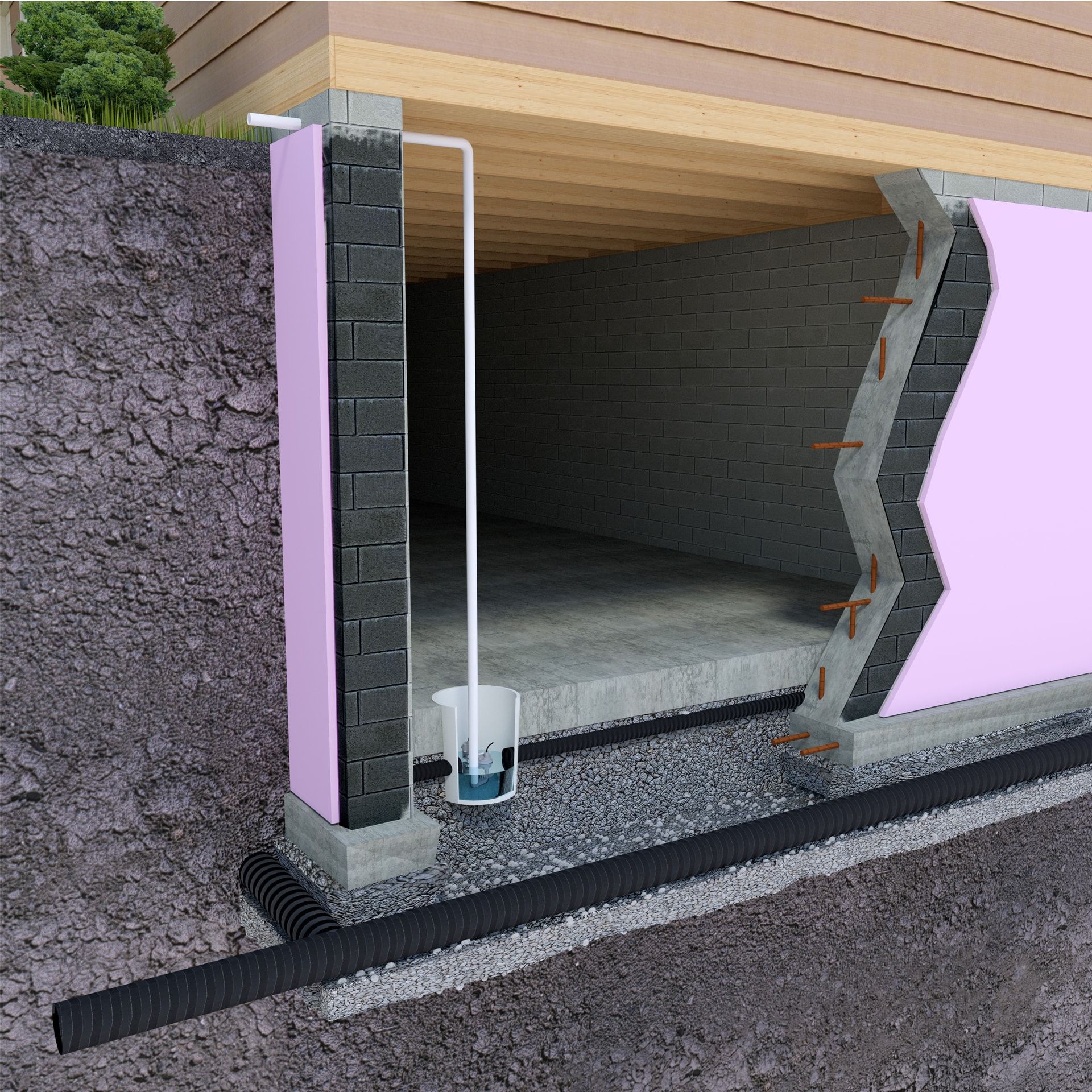
All Rights Reserved | The Basement Ace (Formerly Basement Authorities NH)
